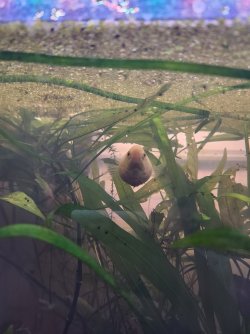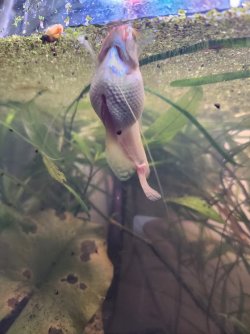Killerbro511
New Member
History: I have a platinum gourami who has always been relatively gluttonous however now has a very enlarged stomach and doesn't appear to be eating (I don't think its dropsy as there is no pine coning, swimming also appears to be fine) . I have fasted him for around 6 days whilst still trying to feed the others (I haven't seen him eat that food) and no change has been observed. I also attempted to feed him peas to which he had absolutely no interest in as well as hatching baby brine which I think he ate, although it wasn't much.
So now I'm looking at Epsom salt baths as I've read that they can help. I've already done one yesterday for 15 mins at 1 tablespoon per gallon (no improvement) but am now seeing contradictory statements on various websites about the dose being 1 teaspoon or 1 tablespoon per gallon. Honestly i have no idea which is the correct one however i did notice that he seemed a bit distressed after releasing him back into the tank (could have been from the struggles catching him though).
Any suggestions or other methods for treatment are greatly appreciated!
Thanks.
So now I'm looking at Epsom salt baths as I've read that they can help. I've already done one yesterday for 15 mins at 1 tablespoon per gallon (no improvement) but am now seeing contradictory statements on various websites about the dose being 1 teaspoon or 1 tablespoon per gallon. Honestly i have no idea which is the correct one however i did notice that he seemed a bit distressed after releasing him back into the tank (could have been from the struggles catching him though).
Any suggestions or other methods for treatment are greatly appreciated!
Thanks.



